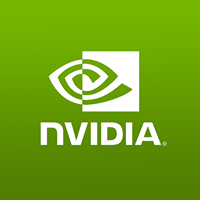The AI Arms Race: Meta and Nvidia's Bold Moves in Custom Models** **
July 26, 2024, 9:30 am
**
In the fast-paced world of artificial intelligence, giants like Meta and Nvidia are making bold strides. The release of Meta's Llama 3.1 and Nvidia's AI Foundry marks a pivotal moment in the tech landscape. These developments are not just upgrades; they are game-changers.
Meta's Llama 3.1 is a heavyweight contender. Mark Zuckerberg touts it as "state of the art." It’s designed to rival offerings from OpenAI and Google. This model is not just an incremental update; it’s a leap forward. Trained with hundreds of millions of dollars in computing power, Llama 3.1 promises improved reasoning and generative capabilities. It can solve complex math problems and create images from text prompts. Imagine uploading a photo of yourself and seeing it transformed into various scenarios. This is the future Meta envisions.
Zuckerberg believes that the intelligence of an AI assistant is paramount. He sees Llama as a tool for innovation, enabling organizations to build their own models. This is a shift from relying on off-the-shelf solutions. Meta aims to democratize AI, allowing developers to harness its power without the constraints of proprietary systems. The goal? To become the backbone of AI development.
However, this ambition comes with hefty investments. Meta has already spent hundreds of millions on AI, and future models will demand even more. Zuckerberg acknowledges the risks of over-investment but argues that falling behind in AI could be catastrophic. The stakes are high. The tech landscape is evolving, and companies must adapt or risk obsolescence.
Meta's strategy includes making Llama accessible to the public, provided users adhere to its acceptable use policy. This open-access approach is designed to foster innovation. Yet, there’s a catch. The datasets used to train Llama 3.1 remain under wraps. Meta is leveraging publicly available data from its platforms, but specifics are scarce. Critics worry about the potential for misuse, especially from geopolitical rivals. Zuckerberg believes that openness is essential for innovation. He argues that locking down technology would stifle progress.
On the same day Meta unveiled Llama 3.1, Nvidia introduced its AI Foundry. This service aims to help businesses create custom AI models tailored to their needs. Nvidia is positioning itself as a full-stack AI solutions provider. The AI Foundry combines hardware, software, and expertise, enabling companies to adapt open-source models like Llama 3.1. This is a strategic move to capture a larger share of the enterprise AI market.
Customization is key. Nvidia claims that tailored models can achieve significant performance improvements. By providing access to pre-trained models and high-performance computing resources, Nvidia simplifies the complex process of AI development. The company’s NeMo toolkit allows for easy customization and evaluation. This is a game-changer for businesses eager to harness AI without compromising control over their data.
Nvidia also introduced NIM (Nvidia Inference Microservices). This innovation packages customized models into containerized formats for easy deployment. It’s a significant step forward, making AI more accessible for enterprises. The goal is to provide a seamless experience for businesses looking to leverage AI.
The timing of these announcements is crucial. As concerns about AI safety and governance grow, companies are seeking ways to harness advanced AI while maintaining control. Nvidia’s AI Foundry offers a solution. It allows enterprises to create and manage their own models, reducing reliance on general-purpose options that may pose risks.
However, the rise of custom AI models raises questions. Will this lead to fragmentation in AI capabilities across industries? Maintaining consistent standards for safety and ethics could become a challenge. As companies rush to adopt AI, the long-term implications of widespread custom model deployment remain uncertain.
The competition in the AI sector is fierce. Meta and Nvidia are not just players; they are leaders shaping the future. Their investments signal a commitment to innovation. The race is on, and the stakes are high. Companies that can effectively leverage these advancements will drive real-world value and innovation.
In this landscape, the narrative is clear. The future of AI is not just about technology; it’s about strategy. Meta and Nvidia are setting the stage for a new era of AI development. Their bold moves could redefine how businesses interact with technology. As the dust settles, one thing is certain: the AI arms race is just beginning. The next chapter will be written by those who dare to innovate.
In the fast-paced world of artificial intelligence, giants like Meta and Nvidia are making bold strides. The release of Meta's Llama 3.1 and Nvidia's AI Foundry marks a pivotal moment in the tech landscape. These developments are not just upgrades; they are game-changers.
Meta's Llama 3.1 is a heavyweight contender. Mark Zuckerberg touts it as "state of the art." It’s designed to rival offerings from OpenAI and Google. This model is not just an incremental update; it’s a leap forward. Trained with hundreds of millions of dollars in computing power, Llama 3.1 promises improved reasoning and generative capabilities. It can solve complex math problems and create images from text prompts. Imagine uploading a photo of yourself and seeing it transformed into various scenarios. This is the future Meta envisions.
Zuckerberg believes that the intelligence of an AI assistant is paramount. He sees Llama as a tool for innovation, enabling organizations to build their own models. This is a shift from relying on off-the-shelf solutions. Meta aims to democratize AI, allowing developers to harness its power without the constraints of proprietary systems. The goal? To become the backbone of AI development.
However, this ambition comes with hefty investments. Meta has already spent hundreds of millions on AI, and future models will demand even more. Zuckerberg acknowledges the risks of over-investment but argues that falling behind in AI could be catastrophic. The stakes are high. The tech landscape is evolving, and companies must adapt or risk obsolescence.
Meta's strategy includes making Llama accessible to the public, provided users adhere to its acceptable use policy. This open-access approach is designed to foster innovation. Yet, there’s a catch. The datasets used to train Llama 3.1 remain under wraps. Meta is leveraging publicly available data from its platforms, but specifics are scarce. Critics worry about the potential for misuse, especially from geopolitical rivals. Zuckerberg believes that openness is essential for innovation. He argues that locking down technology would stifle progress.
On the same day Meta unveiled Llama 3.1, Nvidia introduced its AI Foundry. This service aims to help businesses create custom AI models tailored to their needs. Nvidia is positioning itself as a full-stack AI solutions provider. The AI Foundry combines hardware, software, and expertise, enabling companies to adapt open-source models like Llama 3.1. This is a strategic move to capture a larger share of the enterprise AI market.
Customization is key. Nvidia claims that tailored models can achieve significant performance improvements. By providing access to pre-trained models and high-performance computing resources, Nvidia simplifies the complex process of AI development. The company’s NeMo toolkit allows for easy customization and evaluation. This is a game-changer for businesses eager to harness AI without compromising control over their data.
Nvidia also introduced NIM (Nvidia Inference Microservices). This innovation packages customized models into containerized formats for easy deployment. It’s a significant step forward, making AI more accessible for enterprises. The goal is to provide a seamless experience for businesses looking to leverage AI.
The timing of these announcements is crucial. As concerns about AI safety and governance grow, companies are seeking ways to harness advanced AI while maintaining control. Nvidia’s AI Foundry offers a solution. It allows enterprises to create and manage their own models, reducing reliance on general-purpose options that may pose risks.
However, the rise of custom AI models raises questions. Will this lead to fragmentation in AI capabilities across industries? Maintaining consistent standards for safety and ethics could become a challenge. As companies rush to adopt AI, the long-term implications of widespread custom model deployment remain uncertain.
The competition in the AI sector is fierce. Meta and Nvidia are not just players; they are leaders shaping the future. Their investments signal a commitment to innovation. The race is on, and the stakes are high. Companies that can effectively leverage these advancements will drive real-world value and innovation.
In this landscape, the narrative is clear. The future of AI is not just about technology; it’s about strategy. Meta and Nvidia are setting the stage for a new era of AI development. Their bold moves could redefine how businesses interact with technology. As the dust settles, one thing is certain: the AI arms race is just beginning. The next chapter will be written by those who dare to innovate.


